The story of the Prentiss brothers of the Civil War is one of the most fascinating tales of that event. It has it all: brothers from a border state, with different loyalties, one going north to fight to preserve the Union, one going south to fight for the Confederacy. Then, after fighting for their cause for several years, and with the Civil War about to dramatically end just a week later, they would both be mortally wounded within feet of each other, one leading his regiment in the attack on Confederate fortifications, the other defending those same fortifications. Their volunteer nurse, none other than poet Walt Whitman, was so moved by their story that he would write poignantly of them. And this is a story that has continued to develop, at Green-Wood, over the last few years.
Brothers Clifton Kennedy Prentiss and William Scollay Prentiss were born, respectively, in 1835 and 1839, near Baltimore, Maryland.
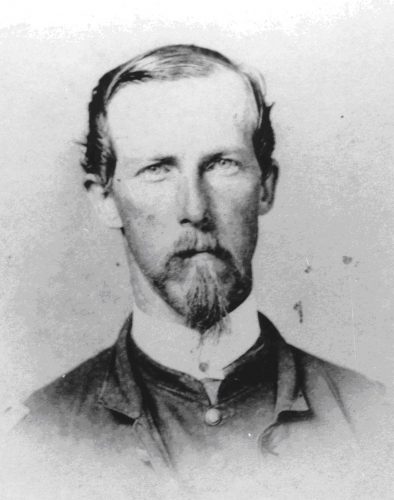
On April 12, 1861, Fort Sumter was attacked by rebel forces and the Civil War began. The next day, President Abraham Lincoln issued a call for troops to rush to Washington, D.C., to defend the nation’s capital. Only two days later, Clifton Prentiss, responding to the call, enlisted in the 7th New York State Militia, serving 30 days with that famed regiment before it mustered out. On March 30, 1862, Clifton enlisted in the 5th Maryland Infantry (Union), then transferred to the Sixth Maryland Infantry as a second lieutenant on July 31, 1862. As the Civil War dragged on, Clifton rose through the ranks, promoted to captain (Chief of Pioneers), then major, and ultimately posthumously breveted lieutenant colonel and colonel.
His younger brother, William Scollay Prentiss, chose a different path. In March of 1862, William, like his brother unmarried and living near Baltimore, cast his lot with the South, enlisting as a private in Company D of the First Maryland Infantry, Confederate. On August 27, 1862, he transferred to Company A of the Second Maryland Infantry.
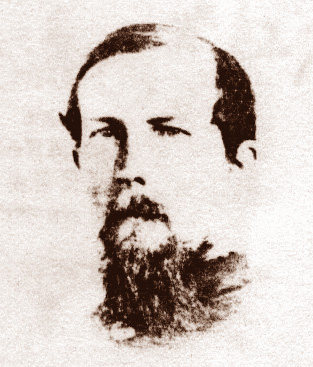
Though, in the ensuing years, Clifton and William heard occasional rumors that the other’s regiment was camped nearby, they did not meet again until April 2, 1865. It was on that date that Lieutenant General Ulysses S. Grant, general-in-chief of all Union forces, ordered an all-out assault along his entire line on the Confederate forces under General-in-Chief Robert E. Lee that had been dug in south of Petersburg, Virginia, for almost a year.
According to the report of the field correspondent for the New York Herald, Major Clifton Prentiss led the dawn attack of the 6th Maryland; he was the first officer to enter the enemy’s defensive works that were in his regiment’s front.
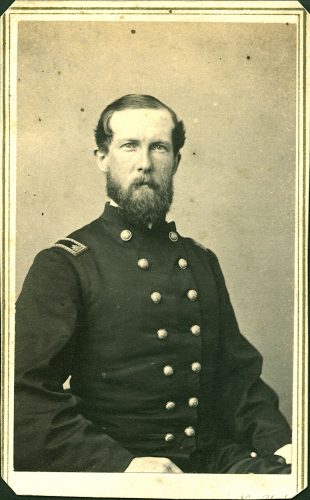
This claim is supported by General J. Warren Keifer, the brigade commander who, in his official report, wrote: “Maj. Prentiss with a large portion of the 6th Md., was the first to penetrate the enemy works.”
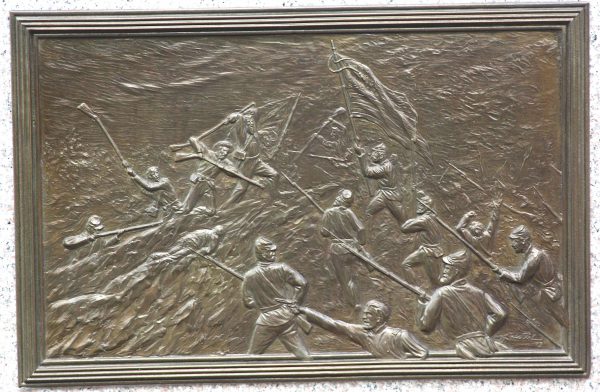
But, as General Keifer noted in his report, Clifton’s triumph was short-lived: “After a most bloody struggle he fell mortally wounded very soon after entering the fortification. Too much praise cannot be given to the officers and men of this regiment.”
Clifton Prentiss had suffered a gunshot wound to his left lung. But his Confederate brother, William Prentiss, who by a coincidence of history was defending the very fortifications Clifton and his regiment had attacked, had also been wounded, struck by an artillery shell fragment above his right knee. John R. King, writing “Sixth Corps at Petersburg. Its Splendid Assault, Which Broke the Main Line of the Rebels” in the April 15, 1920 issue of the National Tribune, gave this account, which he entitled “A Pathetic Incident:”
Maj. Clifton K. Prentiss, a Baltimorean, was a man of exceptional bravery, a veritable cavalier. On this fateful morning he fell mortally wounded, as with waving sword he urged forward his men, to be the first to mount, with assistance, the enemy’s works.
The following pathetic incident occurred after the enemy had been defeated. Two of the 6th Md. men like many others were going over the field ministering to the wounded without regard to the uniform they wore, came upon a wounded Confederate, who after receiving some water, asked if the 6th Md. was any way near there. The reply was, “We belong to that regiment. Why do you ask?” The Confederate replied that he had a brother in that regiment. “Who is he?” he was asked. The Confederate said, “Captain Clifton K. Prentiss.” Our boys said, “Yes, he is our Major now and is lying over yonder wounded.” The Confederate said: “I would like to see him.” Word was at once carried to Maj. Prentiss. He declined to see him saying, “I want to see no man who fired on my country’s flag.”
Col[onel] Hill, after giving directions to have the wounded Confederate brought over, knelt down beside the Major and pleaded with him to see his brother. When the wayward brother was laid beside him our Major for a moment glared at him. The Confederate brother smiled; that was the one touch of nature; out went both hands and with tears streaming down their cheeks these two brothers, who had met on many bloody fields on opposite sides for three years, were once more brought together.
The story of the Prentiss brothers–brother tragically but heroically fighting brother, the story of a nation divided–was picked up by newspapers nationally. On April 10, 1865, this report from a New York Herald correspondent appeared in the Milwaukee Sentinel of far off Wisconsin:
Major Clifton K. Prentiss commanding the Sixth Maryland Volunteers, was one of the first officers to enter the rebel works, but was unfortunately shot through the chest . . . we picked up a wounded rebel, who said he was Lieutenant Prentiss, of the Second Maryland rebel regiment. He is a younger brother of the Major whom he has not seen since the rebellion broke out.
William Howell Reed, in Hospital Life in the Army of the Potomac, reported on what had become of the wounded Prentiss brothers soon after the battle: “They are now lying in the same tent in the Fiftieth New York Engineer’s camp, and I am glad to say likely to do well.” But, sadly, that was not to be.
Both Clifton and William Prentiss had been taken to a Union field hospital near Petersburg. While William was held there as a prisoner of war, his shattered right leg was amputated, consistent with medical practice of the time. On May 14, both brothers were transferred to Armory Square Hospital in Washington, D.C., for further treatment.
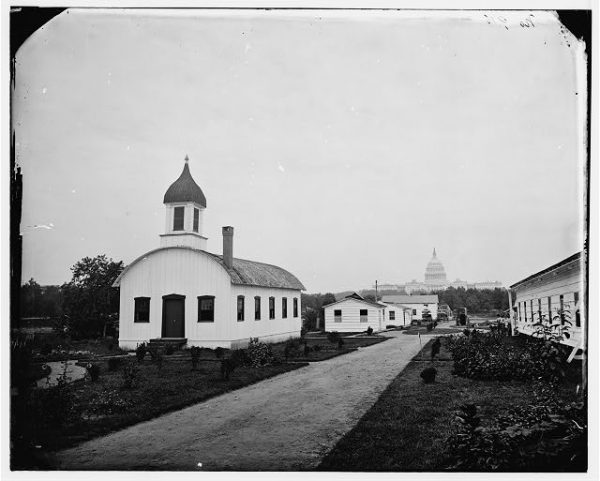
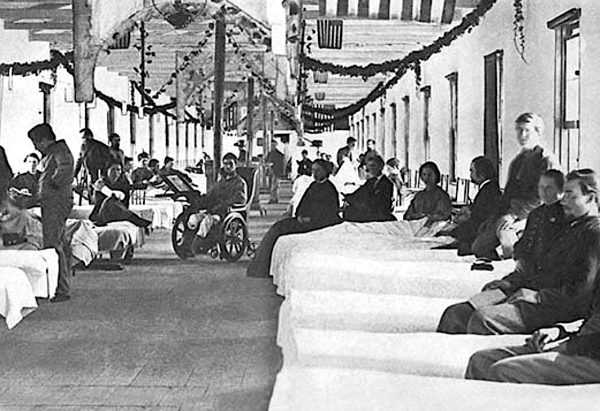
At Armory Square Hospital, a man who described himself as an “Army Hospital Visitor” was waiting. His name was Walt Whitman, destined to become America’s greatest poet.
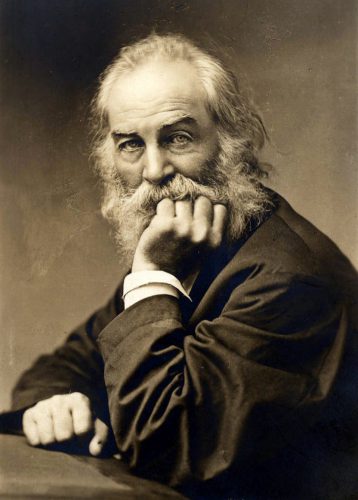
Whitman estimated that, during the Civil War, he treated 100,000 sick or wounded soldiers–Union and Confederate–in army hospitals over his three years as a volunteer nurse. Whitman wrote the stories of only fifty or so of these–those whose stories had particularly moved him. One such entry, for May 28-29, 1865, titled “Two Brothers, One South, One North,” was about these Prentiss brothers:
May 28-9. — I staid to-night a long time by the bedside of a new patient, a young Baltimorean, aged about 19 years, W. S. P., (2d Maryland, southern,) very feeble, right leg amputated, can’t sleep hardly at all — has taken a great deal of morphine, which, as usual, is costing more than it comes to. Evidently very intelligent and well bred — very affectionate — held on to my hand, and put it by his face, not willing to let me leave. As I was lingering, soothing him in his pain, he says to me suddenly, “I hardly think you know who I am — I don’t wish to impose upon you — I am a rebel soldier.” I said I did not know that, but it made no difference. Visiting him daily for about two weeks after that, while he lived, (death had mark’d him, and he was quite alone,) I loved him much, always kiss’d him, and he did me. In an adjoining ward I found his brother, an officer of rank, a Union soldier, a brave and religious man, (Col. Clifton K. Prentiss, sixth Maryland infantry, Sixth corps, wounded in one of the engagements at Petersburg, April 2 — linger’d, suffer’d much, died in Brooklyn, Aug. 20, ’65.) It was in the same battle both were hit. One was a strong Unionist, the other Secesh; both fought on their respective sides, both badly wounded, and both brought together here after a separation of four years. Each died for his cause.
William died at Armory Square Hospital on June 24, 1865, and his remains soon were interred at Green-Wood Cemetery in section 84, lot 6007, near Valley Water. Clifton, holding out hope for his own recuperation, was discharged in August to a relative’s home at 35 Livingston Street in Brooklyn. But he died there on August 18, less than two months after his brother had succumbed. Clifton soon was buried next to his brother William, and they have lain side by side for 153 years.
The extraordinary story of the Prentiss brothers has been developing at Green-Wood for years now. Green-Wood launched its Civil War Project in 2002–an effort to find as many as possible of the Civil War veterans who are interred at the cemetery. Early on, we guessed that we might find 500 such men; as of this writing, we have identified 5,200! Some we have found through painstaking research–for example, volunteers have gone through the 162,000 names of those who enlisted in New York City or Brooklyn, comparing those names online to Green-Wood’s database of those interred at the cemetery. But, as word spread about our unprecedented Civil War Project, we also heard from many descendants who knew the stories of their ancestor’s service and that they were interred at Green-Wood. One such descendant, who lives in Arizona, contacted me about 2005, sharing the story of, and research about, the Prentiss brothers. Without that help, we might have not found them at Green-Wood–their marble gravestones had become unreadable and therefore provided no clue.
2008 marked another year in the story of the Prentiss brothers at Green-Wood. David H. Jones is an historical researcher and writer. He became fascinated by the story of the Prentiss brothers. His book, Two Brothers–One North, One South, published in 2008, tells their story based on new–and extensive–research.
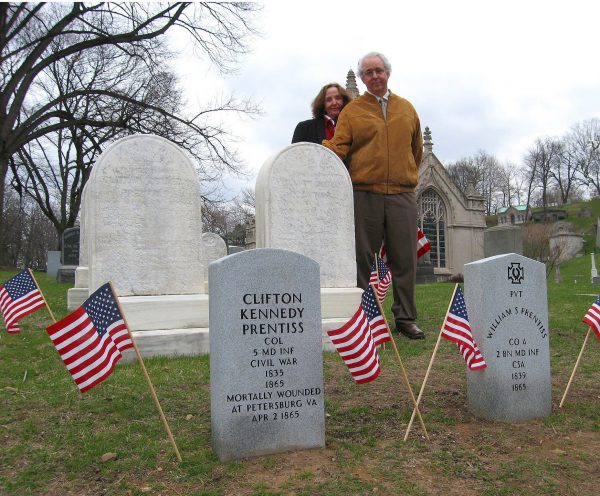
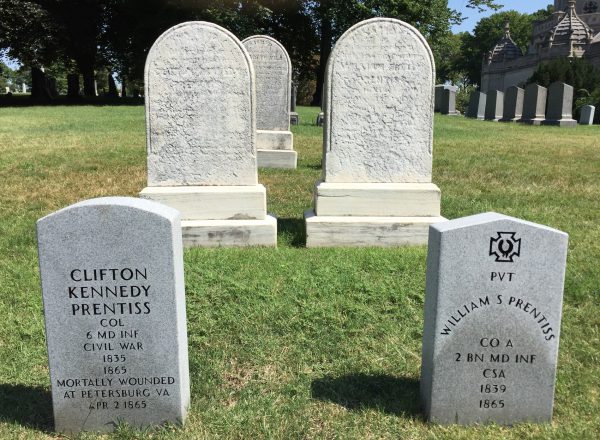
And now to further update this story. In 2016, I was contacted, out of the blue, by a Prentiss descendant living in Oregon. She told me she was descended from Clifton Kennedy Prentiss and had some items from his uniform that she wished to donate to Green-Wood. I was thrilled! Here they are:
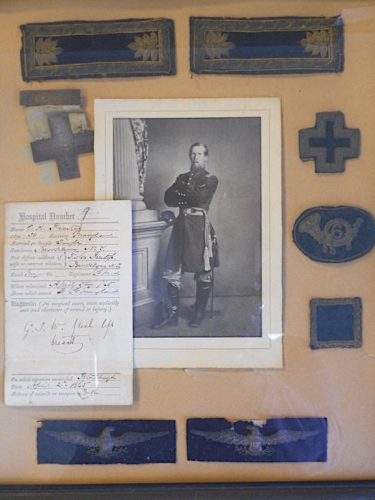
And here are closer views of some of these donated items, thanks to Stacy Locke, Green-Wood’s manager of historical collections, who carefully and skillfully took them:
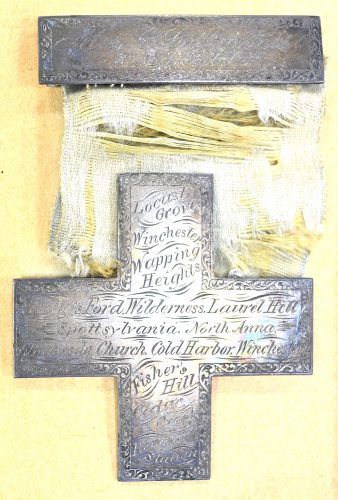
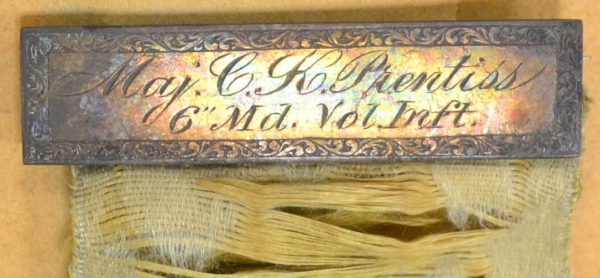
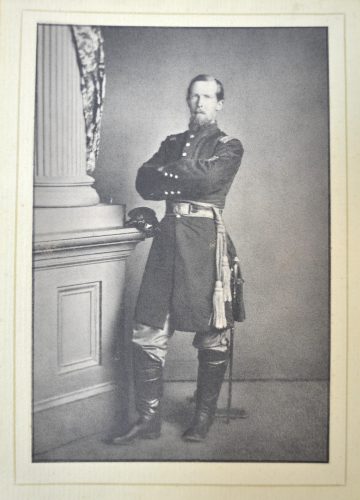
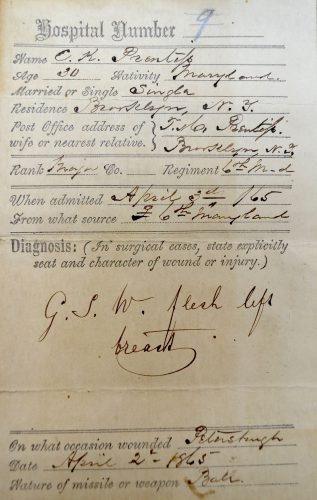
The Prentiss brothers’ story is an extraordinary one. Green-Wood is proud to tell it–and to share these donated items online.